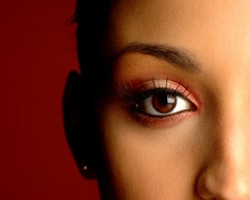
If you want natural products, you have to be willing to search them out. Learn to read labels, and refuse to settle for half-natural hair and skin care. Below I've listed and described the "ten most wanted"-the ten chemicals I most want to see off the labels of so-called natural hair and skin care products.
- Propyl, Butyl and Ethyl Paraben – Used as inhibitors of microbial growth and to extend shelf life of products. Have caused many allergic reactions and skin rashes. Studies have shown that they are weakly estrogenic and can be absorbed by the body through the skin. Widely used even though they are known to be toxic.
- Diethanolamine (DEA), Triethanolamine (TEA) – Often used in cosmetics as emulsifiers and/or foaming agents. They can cause allergic reactions, eye irritation and dryness of hair and skin. DEA and TEA are "amines" (ammonia compounds) and can form cancer-causing nitrosamines when they come in contact with nitrates. Toxic if absorbed into the body over a long period of time.
- Diazolidinyl Urea, Imidazolidinyl Urea – These are widely used preservatives. The American Academy of Dermatology has found them to be a primary cause of contact dermatitis. Two trade names for these chemicals are Germall II and Germall 115. Neither of the Germall chemicals contains a good antifungal agent, and they must be combined with other preservatives. Both these chemicals release formaldehyde, which can be toxic.
- Sodium Lauryl/Laureth Sulfate – A cheap, harsh detergent used in shampoos for its cleansing and foam-building properties. Often derived from petroleum, it is frequently disguised in pseudo-natural cosmetics with the phrase "comes from coconuts." It causes eye irritation, scalp scurf similar to dandruff, skin rashes and other allergic reactions.
- Petrolatum – Also known as petroleum jelly, this mineral oil derivative is used for its emollient properties in cosmetics. It has no nutrient value for the skin and can interfere with the body's own natural moisturizing mechanism, leading to dryness and chapping. It often creates the very conditions it claims to alleviate. Manufacturers use petrolatum because it is unbelievably cheap.
- Propylene Glycol – Ideally this is a vegetable glycerin mixed with grain alcohol, both of which are natural. Usually it is a synthetic petrochemical mix used as a humectant. It has been known to cause allergic reactions, hives and eczema. When you see PEG (polyethylene glycol) or PPG (polypropylene glycol) on labels, beware-these are related synthetics.
- PVP/VA Copolymer – A petroleum-derived chemical used in hairsprays, styling aids and other cosmetics. It can be considered toxic, since inhaled particles can damage the lungs of sensitive persons.
- Stearalkonium Chloride – A quaternary ammonium compound used in hair conditioners and creams. Developed by the fabric industry as a fabric softener, it is a lot cheaper and easier to use in hair conditioning formulas than proteins or herbals, which are beneficial to the hair. Causes allergic reactions. Toxic.
- Synthetic Colors – Used to make cosmetics "pretty," synthetic colors, along with synthetic hair dyes, should be avoided at all costs. They will be labeled as FD&C or D&C, followed by a color and a number. Example: FD&C Red No. 6 / D&C Green No. 6. Many synthetic colors can be carcinogenic. If a cosmetic contains them, don't use it.
- Synthetic Fragrances – The synthetic fragrances used in cosmetics can have as many as 200 ingredients. There is no way to know what the chemicals are, since on the label it will simply read "fragrance." Some problems caused by these chemicals include headaches, dizziness, rash, hyperpigmentation, violent coughing, vomiting, skin irritation-the list goes on. Advice: Don't buy a cosmetic that has the word "fragrance" on the ingredients label.
Leave a Comment




